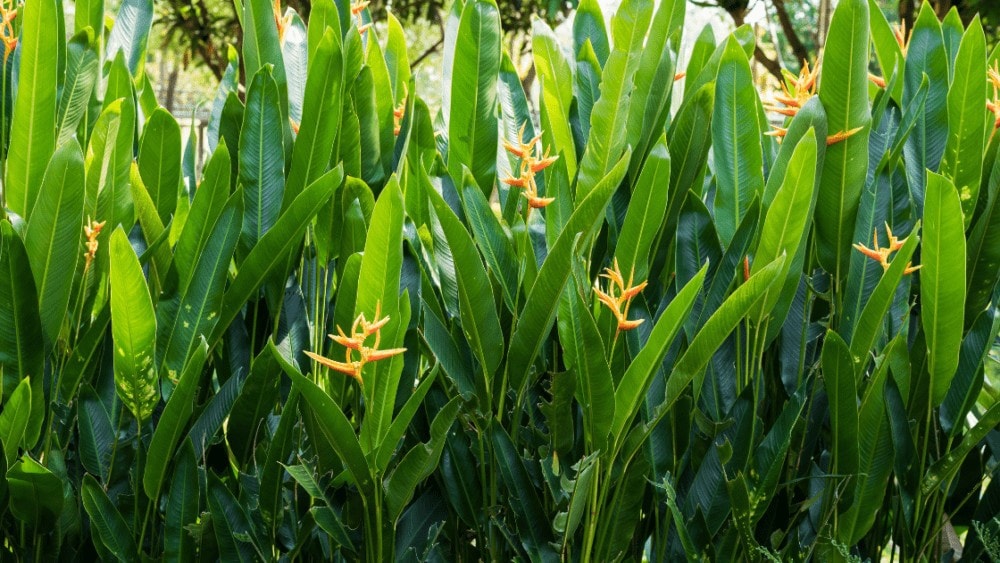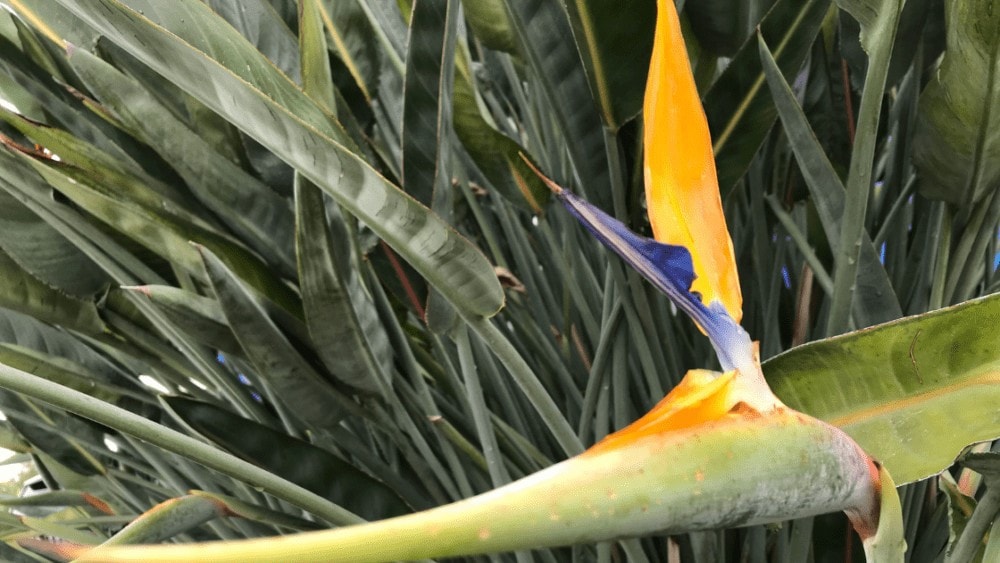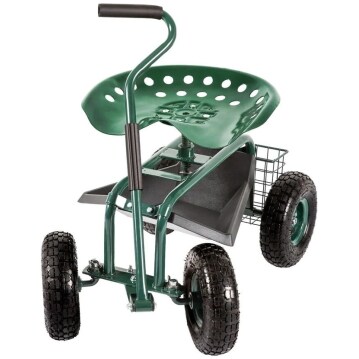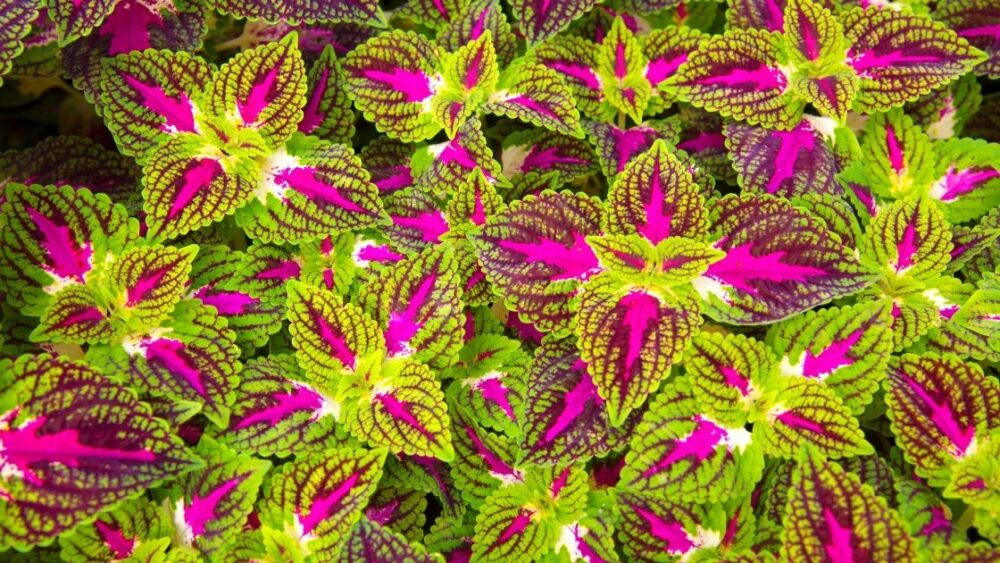
Can you keep Strelitzia small and more suitable for indoor growing simply by limiting its pot size and pruning it? The short answer is yes – in fact, you can remove larger leaves and rely on pot confinement in order to prevent the plant from over growing, or ‘hard pruning’ which means removing all the leaves and effectively ‘re-starting’ your bird of paradise.
Bird of paradise (Strelitzia) is a spectacular, tropical flowering plant, which is surprisingly easy to care for. There is one problem though – the plant can reach more than 4 feet in height and is very frost-sensitive, making it necessary to keep it indoors during the winter. In the following paragraphs, we’ll explore those options in more detail, will look at their advantages and drawbacks and will discuss the optimum growing conditions of Strelitzia.
How Tall Can the Bird of Paradise Plant (Strelitzia) Get?
There are several Strelitzia species. The largest one is Strelitzia nicolai, which can grow taller than a banana tree – up to 30 feet. This species has white-blue flowers and is not as common as the yellow-flowering Strelitzia reginae. S. reginae can reach a height of up to 10 feet. It’s perfectly possible to grow a bird of paradise plant to those heights if you fertilize often and keep the pot outdoors throughout the warm months.
Browse our Affiliate Products

There are artificially-selected dwarf varieties of Strelitzia reginae, but they are difficult to find, hard to identify and are not tiny – they can still reach a height of more than 3 feet.
What Can Happen if You Let Growth Continue Unchecked and Never Prune?
Eventually, the plant will exhaust the nutrient supply in the pot (especially the potassium) and stop growing. The plant may become more susceptible to diseases if kept small by limiting its nutrient supply instead of by pruning. This is because the leaves will eventually grow old and need to be replaced, but the lack of nutrition can make this difficult for the plant. Limiting the nutrient supply will also hinder flowering. So you need the right balance of of nutrients and leaf production in order for the plant to maintain it’s health.

Is It Possible to Keep Strelitzia Small By Containing It and Pruning It?
The best way to keep Strelitzia small is by using a combination of pruning and pot containment. Limiting the light intensity can greatly reduce the size of the plant as well, but it can also prevent flowering – Strelitzia plants that are kept in living rooms often flower very rarely. Ideally, you’ll have to find a good balance of light intensity, pruning and pot size that limits the growth of the plant to the size you want, while allowing the plant to flower.
How to Properly Trim a Bird of Paradise Plant?
Strelitzia has one main stem, from which a rosette of leaves grow. This means that you can’t really trim the plant ‘a bit’ – you either remove a whole leaf or you keep it. This makes it difficult to achieve a dwarf size with frequent pruning, as can be done with bonsai trees or even plants like peppers. However, pruning can still be performed successfully on Strelitzia.
Here are a few practical pruning options for Strelitzia:
- Keep getting rid of old, large leaves –
- this can successfully keep the plant form accumulating enough leaf area to grow very tall. Leaves can be removed at any time of the year without harming the plant.
- Perform ‘hard pruning’
- this can often be the most practical approach for people who have limited indoor space in which to keep their Strelitzia during the winter. Hard pruning simply means cutting the whole plant close to the ground and waiting for new growth to emerge. This can be done around every two to three years, depending on the age and size of your plant. Hard pruning should not be performed on very small plants with a thin rosette of leaves, because the roots won’t have much energy stored for the new growth. Hard pruning may prevent the plant from flowering for a whole year, which is the big drawback of this method.
- Intuitive pruning
- this simply involves cutting back the plant in any way you find suitable. It’s a combination of the first two methods. You can remove a few thicker cluster of leaves, but let others keep growing. This type of pruning can be done at any time and it’s not strictly necessary to do it during spring. You can cut the plant a little before bringing it indoors for the winter and then perform hard pruning during early spring.

How Often Should Trimming be Done and What Tools are Most Suitable for the Job?
Regular pruning shears are the tool of choice for pruning Strelitzia, but small saws or even a regular toothed knife can also be used such as sickles and saw knifes. The pruning frequency depends on how fast your plant is growing, which in turn depends on how much direct sunlight it receives and how often it’s fertilized. Getting rid of old, yellowing leaves can be done several times a year.
Optimum Growing Conditions – How to Care For a Bird of Paradise Plant
Now let’s take a look at the conditions you need to provide your bird of paradise plant to ensure its long-term happiness and frequent blooming. This plant is easy to care for and doesn’t have any special requirements.
How Much Sunlight is Required?
Giving Strelitzia a few hours (2-4) of direct sun each day is enough to promote flowering. Keeping it indoors year round may completely prevent flowering, or the plant may flower every other year. Keeping the plant outdoors in the direct sun all summer and fertilizing it will enable it to reach a height of 10 feet relatively quickly – usually in two to three years.
What Temperature Is Best?
This is a tropical plant that can tolerate all normal outdoor temperatures higher than around 70F (20C). Below 60F (15C) growth will be much slower. Nighttime temperatures should be above 50F (10C) year-round. In high temperatures, the demand of the plant for water will greatly increase and watering multiple times per day may be necessary.
What Type of Soil Works Well?
Regular potting soils work well for the Bird of paradise plant. It likes a slightly acidic soil that is rich in nutrients. General purpose fertilizer can be generously used during the spring and summer, but too much nitrogen may inhibit flowering and cause the plant to grow too many and too large leaves. A balanced fertilizer applied once per week usually works best. Because of the large foliage of this plant, foliar feeding is an excellent and safer alternative to soil fertilizers. Read our soils article here, What Are The BEST Potting Soils for Every Type of Plant?
How Much and How Often Should You Water?
Most Bird of paradise plants need daily watering. Large plants confined in small pots may require watering multiple times per day, especially if placed in direct sunlight. As a general rule, the soil should be constantly moist, but not very wet. Keeping the soil waterlogged can cause irreversible damage to the roots and wilting of the whole plant.
Can It Grow in Pots?
Strelitzia is almost always grown in pots with a diameter of around 10 inches. Planting directly outdoors is rarely practical, but can be done if you live in a USDA zone 10 and above. In that case, the plant can grow to many feet in height in only a few years. What is the perfect pot for my plants?
Can It Grow Well Indoors?
This will depend on the light intensity. Placing the plant near a bright, south-facing window can certainly make it thrive indoors year round and get large enough to eventually require some pruning. Just like most other plants, Strelitzia responds to lower light intensity by growing more slowly and flowering less frequently, if at all.
When Does It Flower?
Strelitzia starts flowering once it reaches 3 to 4 years of age – all flowering Strelitzias from the nursery are already at least that old. The plant will produce flowers during the spring, summer or autumn. The flowers are long-lasting and will remain for up to a month. Bird of paradise plants may flower multiple times a year, depending on the growing conditions and the variety.
My Bird of Paradise Plant is Wilting and Dying – What Should I Do?
Overwatering is the most common cause of wilting, especially if the leaves are also turning yellow. Those symptoms can resolve on their own when proper watering is resumed, but it’s best to repot the plant in new soil to ensure quick recovery. Unfortunately, too much root damage from overwatering or from careless repotting can prevent flowering for up to a year. Recovery can be greatly sped up with a lot of sunlight and optimal fertilization.
How Well Does This Plant Deal With Unfavorable Growing Conditions?
Given high light intensity and an abundance of nutrients, the bird of paradise plant can grow surprisingly fast and put out 1 to 3 large leaves each month. In the absence of those favorable conditions, its growth slows down and it may not flower at all. Overwatering, extreme light deficiency and frost are the three factors that can irreversibly damage and kill this plant.
Final Thoughts
A mature, flowering bird of paradise plant can rarely be kept smaller than around 2-3 feet in height, unless you can get your hands on a suitable dwarf variety. Removing old, large leaves is a good way to limit the growth of the plant without preventing flowering. Large plants can be ‘re-started’ by completely cutting them a few inches above the ground. Recovery from this ‘hard pruning’ can be as short as a few months, given optimal growing conditions and ample nutrient stores in the roots. However, it may prevent flowering for up to a year.












